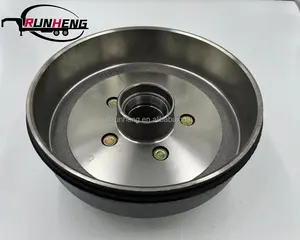
Factory Price Semi Trailer Parts Length 2144mm Bpw Axle 1840MM 16 Tons German Type Axles Made In China

Factory Direct Sales Trailer Brakes Wheel Hub Trailer Axle 5 Holes With Electric/hydraulic Brake Trailer Hub Drum




















Hydraulic brake axles are integral components in the realm of heavy-duty transportation and machinery. These axles are designed to manage and distribute the weight of a vehicle, particularly when it is in motion, ensuring stability and safety. The use of hydraulic systems in these axles allows for smoother deceleration, contributing to their widespread adoption in various industrial sectors.
There are several types of hydraulic brake axles tailored to different applications. From single-axle setups for lighter loads to multi-axle systems for heavy-duty use, the variety ensures that there is a fit for every requirement. These axles are commonly found in commercial vehicles, agricultural machinery, and construction equipment, where they provide the necessary braking force to handle substantial weight effectively.
The construction of a hydraulic brake axle involves robust materials such as high-grade steel or aluminum, which offer durability and longevity. Features may include corrosion-resistant coatings and precision-engineered components that ensure consistent performance. The hydraulic mechanism is a complex network of cylinders and fluid lines that work together to apply pressure to the brake pads or shoes, resulting in efficient stopping power.
The advantages of using a hydraulic brake system in axles are numerous. They provide smoother and more controlled braking, which is essential for managing heavy loads. The hydraulic pressure can be easily adjusted, allowing for customization according to the load and driving conditions. Additionally, these systems require less physical effort from the operator, reducing fatigue and improving overall safety.
When selecting a hydraulic brake axle, it is crucial to consider the load capacity, compatibility with the vehicle or machinery, and the specific environment in which it will operate. Factors such as terrain, climate, and frequency of use will influence the type of axle that is best suited to your needs. It is also important to look at the maintenance requirements to ensure long-term reliability.
In industrial settings, the integration of a hydraulic brake axle can significantly enhance operational efficiency. These axles are engineered to withstand the rigors of heavy use, making them a valuable addition to any fleet or machinery lineup. With the ability to handle high-pressure situations and ensure safety under load, they are a cornerstone in the mechanics of modern industry.